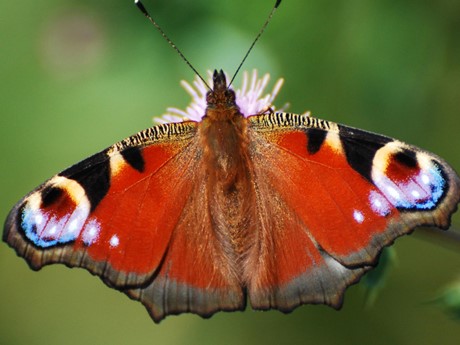Latest State of the UK Climate report reveals increasing impact of climate change
Lorienne Whittle, 31/07/2020
Temperature records broken in 2019
The latest State of the UK Climate report has just been published, showing the increasing extent to which climate change is influencing the UK climate. The report, compiled by the Met Office and published in the Royal Meteorological Society’s International Journal of Climatology, reveals that four UK high temperature records were broken in 2019. These examples add to a trend for warming temperatures seen over the last few decades in the UK.
What is the impact on our wildlife?
Phenology - the study of the timing of natural events – can help us answer this. Phenology is a key mechanism for tracking changes in plant and animal behaviour due to climate change (Fourth assessment report by the Intergovernmental Panel on Climate Change, 2007). Nature’s Calendar records were used in the phenology section of the State of the UK Climate report.
‘‘Nature is on the frontline of climate change, continually having to readjust and survive extreme weather and shifting seasons. Changes in local ecosystems are a first key indicator of how nature is responding to our warming Earth, and this is why Nature’s Calendar plays such an important role in highlighting responses, however localised.... they all contribute to learning more of the broader trends and impacts of climate change.’’
Clare Nasir, meteorologist, author and tv presenter
First leaf records from the following species were used in the report:

Pedunculate oak (Photo: Kylie Harrison Mellor)

Elder (Photo: Margaret Barton)

Hawthorn (Photo: Christine Tansey)

Silver birch (Photo: Judith Garforth)
In response to the warm winter and mild spring temperatures of 2019, the first leaves appeared on trees nearly ten days early compared to the baseline period (1999- 2018). Meanwhile the warmer October temperatures meant the point at which trees lost all their leaves was slightly later than average. The result was an extension of just over 12 days for the time in which trees had leaves through 2019 compared to the the baseline period.
Bare tree records from the following species were used in the report:

Pedunculate oak (Ben Lee)

Elder (Photo: Ben Lee)

Hawthorn (Photo: Ben Lee)

Silver birch (Photo: Ben Lee)
The findings mirror existing research in showing a trend towards spring events occurring earlier due to the warming climate. The consequences of this have also been studied: Nature’s Calendar records formed part of a Nature publication on the links between oak trees first leafing, caterpillar activity and birds nesting. It was found that an early spring creates a ‘mismatch’ in timings along the food chain, where hungry chicks hatch too late to feast on abundant caterpillars. This could put populations of blue tits, great tits and pied fly catchers at risk.
Nature’s biological events are becoming out of sync and, ultimately, some species will be able adapt better than others. The better we can fully understand the impacts of climate change, the better placed we are to fight against it. It is already clear that trees have an important role to play in tackling the both the nature and climate crises.
“This is a stark reminder of the need to take immediate action on climate change. Trees are not only a measure of what’s happening; they’re a vital part of the solution. As natural carbon stores they’re key agents in fighting climate change and mitigating against its impacts, for example in their role in lessening the devastating effects of flooding.”
Dr Darren Moorcroft, CEO Woodland Trust
How you can help
Each phenology record added to the Nature’s Calendar database increases to our knowledge of how natural events are unfolding across the UK.
The first signs of autumn are beginning to show. From early August keep your eyes peeled for ‘first ripe fruit’ on:
- Elder - Rowan - Blackthorn - Hawthorn - Beech - Hazel

Test for softness to record first ripe elder berries (Photo: Ben Lee)

Hawthorn berries ripen from early August to late September (Photo: Ben Lee)

Record first ripe hazel nuts when they're fully coloured and falling naturally (Photo: Ben Lee)

When beech nuts start to fall naturally they can be recorded as first ripe fruit (Photo: Ben Lee))
Add a record to Nature’s Calendar and you’ll be contributing to a database of phenology records that’s increasingly used by scientists and policy makers to study the impacts of climate change on our wildlife.
Watch our short film and be inspired.
